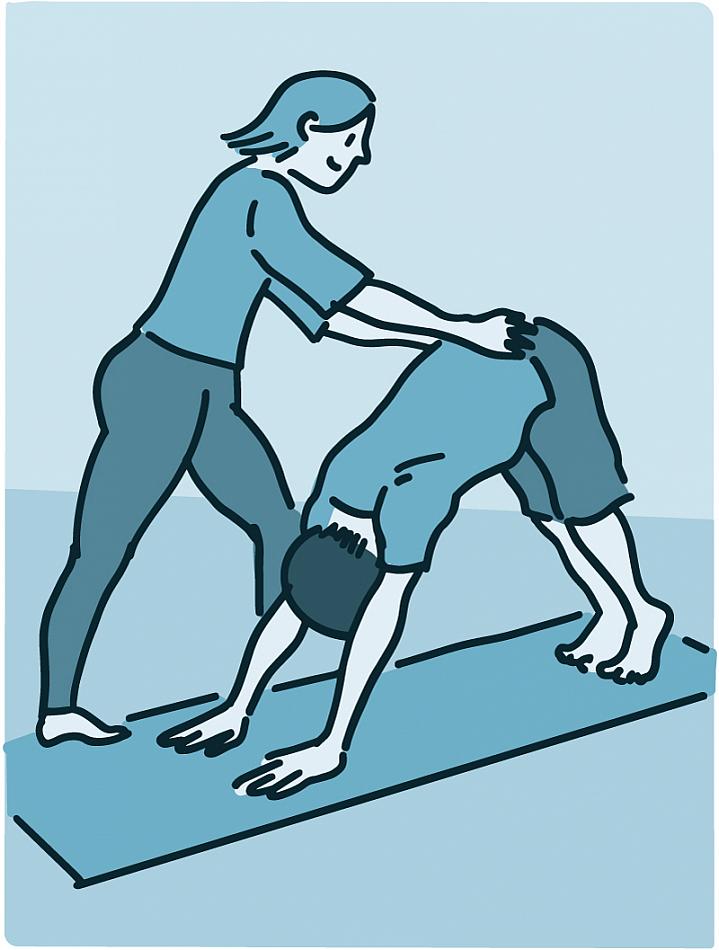Yoga for Health
Positioning Your Body and Mind

Have you rolled out a yoga mat lately? If so, you’re among many who have taken up yoga to relax and stay fit. One in seven adults in the U.S. has practiced yoga in the past year. Yoga may help bring several health and wellness benefits.
Based in Indian philosophy, yoga involves both the body and mind. It began as a spiritual practice. Modern yoga focuses more on physical poses, breathing techniques, and meditation. Meditation involves exercises that help you clear and calm your thoughts.
“With practice, yoga can teach you to direct the mind on a single object,” explains Dr. Pamela Jeter, an NIH expert on yoga research. “It’s practicing being aware and present from moment to moment.”
But, she says, it takes a lot of practice. She suggests focusing on the physical aspects at first. With time, the meditation part becomes easier.
There are many types of yoga. Some are slower and focus on holding poses. Others involve flowing movements that connect to your breathing.
Research suggests that yoga may help improve general wellness. In studies, yoga has helped some people manage stress, improve mental health, lose weight, or quit smoking.
There’s also evidence that yoga may be helpful for some medical conditions. Yoga may help lessen pain and menopause symptoms. It improved sleep in studies of older adults and people with cancer.
Several studies have shown that yoga can help those with chronic low back pain. Some experts now recommend it as a first-line treatment for low back pain, among other non-drug treatments.
But, Jeter cautions, more high-quality research is needed to confirm yoga’s health benefits. “There’s a lot of research out there for different health conditions, but there’s not enough to say for sure,” she says. Yoga shouldn’t replace treatment from your health care provider.
It’s also unclear what it is about yoga that helps. The practice combines physical, mental, and spiritual elements. “There are a lot of components in yoga. We don’t know what the active ingredient is,” Jeter says.
Research into yoga is ongoing. Studies are now looking at whether yoga is helpful for specific groups of people. For example, whether it can reduce chronic pain for military veterans or improve quality of life for people who have had breast cancer. New studies are also looking into whether yoga may help mental health conditions like anxiety, depression, and post-traumatic stress disorder (PTSD).
What should you know if you’re thinking about starting yoga? “Start slowly and carefully in order to avoid any sort of injury,” Jeter says. If you have a medical condition, talk with your health care provider before getting started.
Everyone’s body is different. Yoga postures should be modified based on your abilities. Choose an instructor who is experienced and attentive to your needs.
You may also want to seek out a yoga therapist. “Yoga therapists have more extensive training than that required of a regular yoga teacher,” Jeter explains. “They’re trained to work with different conditions and mostly work one-on-one or in small groups.”
If you want to try yoga, see the Wise Choices box for tips on getting started.
NIH Office of Communications and Public Liaison
Building 31, Room 5B52
Bethesda, MD 20892-2094
nihnewsinhealth@od.nih.gov
Tel: 301-451-8224
Editor: Harrison Wein, Ph.D.
Managing Editor: Tianna Hicklin, Ph.D.
Illustrator: Alan Defibaugh
Attention Editors: Reprint our articles and illustrations in your own publication. Our material is not copyrighted. Please acknowledge NIH News in Health as the source and send us a copy.
For more consumer health news and information, visit health.nih.gov.
For wellness toolkits, visit www.nih.gov/wellnesstoolkits.



